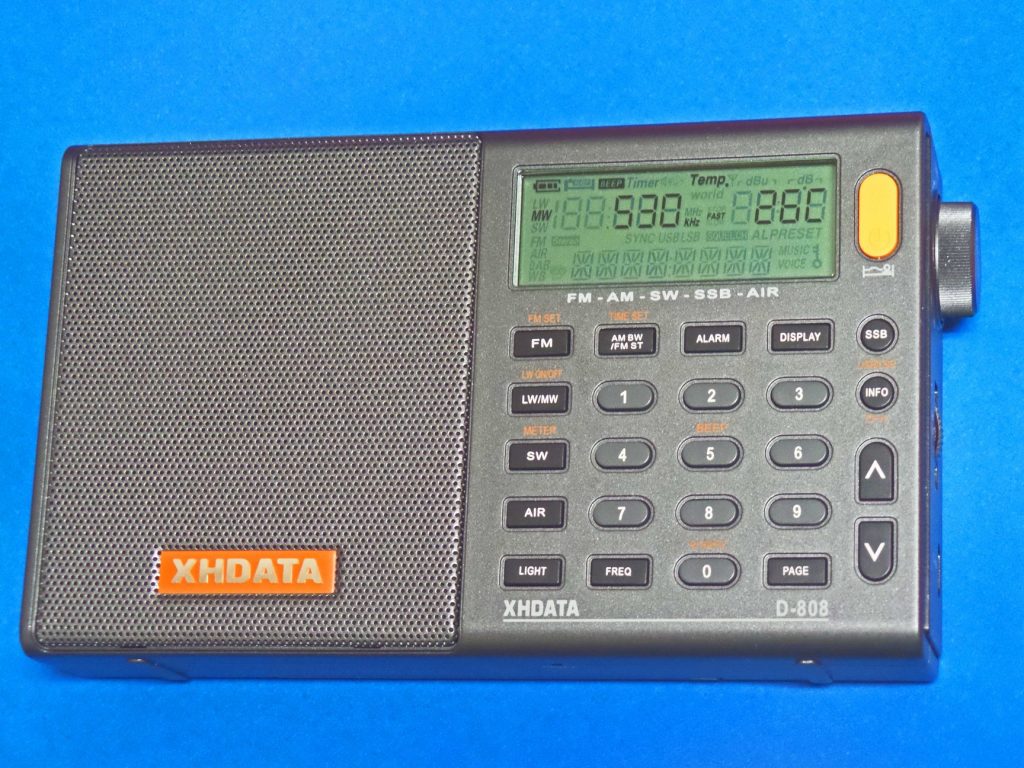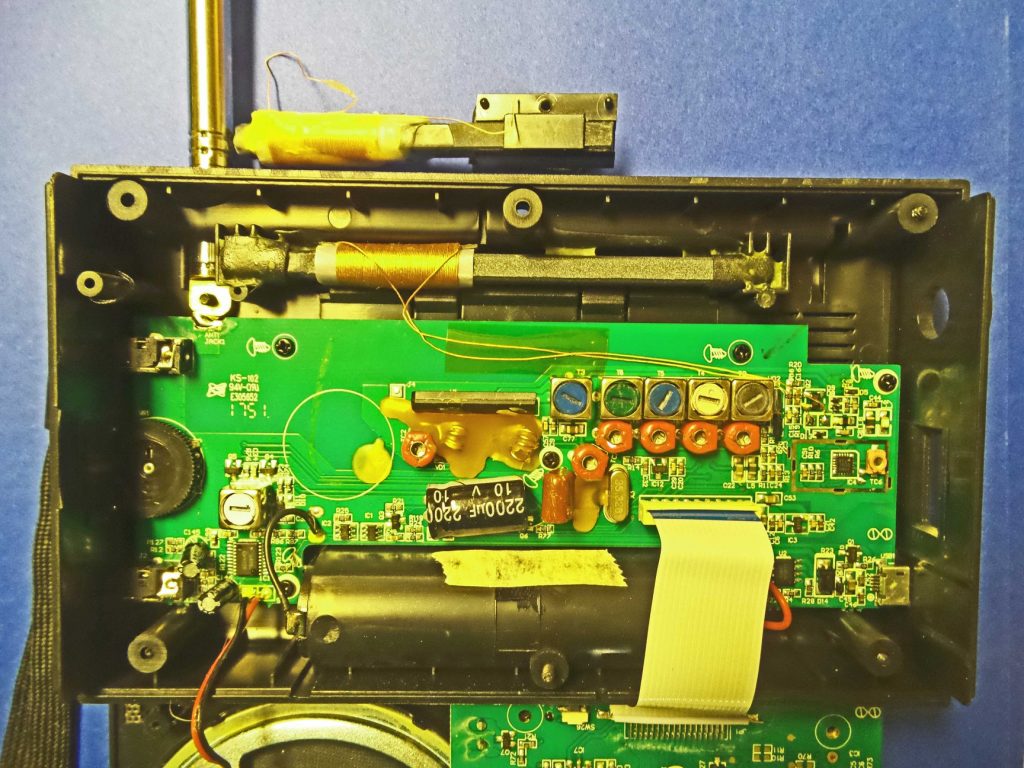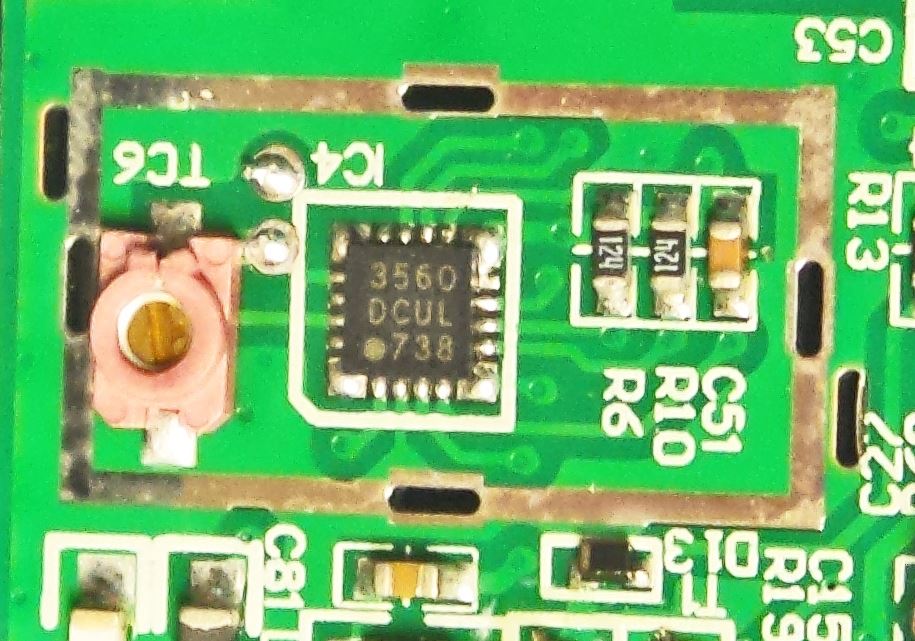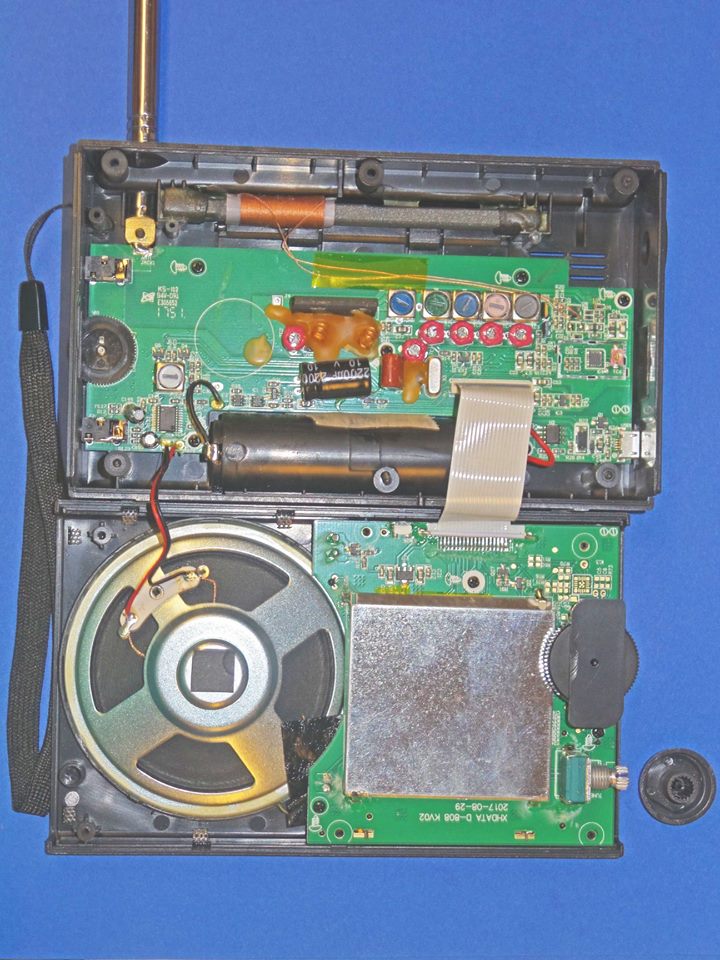
Many thanks to SWLing Post contributor, Gary DeBock, who shares the following report of the XHDATA D-808:
XHDATA D-808 AM-LW-FM-SW-AIR Portable- Tech Report
by Gary DeBock
The XHDATA D-808 portable is an AM-LW-FM-SW-SSB-AIR band model which has already been the subject of many excellent reviews. Until recently the model was not marketed to North American purchasers, but recently a couple of Chinese sellers have started soliciting North American buyers via eBay listings.
My own interest in the model was in comparing its AM Band performance to that of the best performing Ultralight radios– specifically the CC Skywave and Skywave SSB models. Although the D-808 is slightly larger than the 20 cubic inch limit for Ultralight radios, its size and weight make it very convenient to take along as a “travel portable,” specifically as an SSB-enhanced model capable of checking transoceanic station carrier strength on exotic ocean beaches. The Skywave SSB model can also do that– but at a $169.99 list price, compared to the $112.86 (plus $10 shipping) cost of the D-808. In addition, none of the published D-808 reviews seemed to have any information about internal components like the loopstick, or Si4735 DSP chip.
My first test was to compare the stock Skywave SSB model with the D-808 in fringe AM station reception. The Skywave SSB model has a reputation of being one of the most sensitive Ultralight radios, but the D-808 clearly outperformed it on both low band fringe station (550-KARI) and high band fringe station (1700-City of Auburn TIS) reception. The D-808 couldn’t quite hang with a 7.5″ loopstick Skywave model, but that only made me curious about how the same modification could enhance the D-808. So… it was time to disassemble the D-808, and find out why its loopstick was such a superior performer.

The D-808’s 3 7/8″ (98mm) loopstick is shown adjacent to the 2 3/4″ (70mm) loopstick of the CC Skywave models. The D-808 is much easier to disassemble than the CC Skywave models, though, so enhanced loopstick transplants should prove to be quite popular in the D-808.
The D-808 loopstick is 3.7/8″ (98mm) long, while that of the CC Skywave SSB model is only 2 3/4″ (70mm) long. Other reviewers have noted the excellent performance of the D-808 on the AM band, and this is probably one of the main reasons. The SSB mode operates very similar to that of the Skywave SSB in providing a quick check of carrier strength on weak AM band targets– the LSB mode can be set to +55, and the radio tuned to different frequencies to check fringe station carrier strength. This can provide a real-time check of propagation changes during time-limited propagation openings for live ocean beach DXing with Ultralight radios or other portables (or with the D-808 itself, if desired).

The D-808’s Si4735 DSP chip was initially used in the Eton Traveler III Ultralight radio model, which was fully reviewed in the 2015 Ultralight Radio Shootout (where it won top honors for MW sensitivity). The D-808 augments that capability with a significantly longer loopstick, plus multiple DSP filtering selections. As such, the D-808 in stock form should be a very superb performer.
The Si4735 DSP chip has markings of “3560, DCUL, .738” and provides a wide range of AM bandwidth choices for the Medium Wave DXer (6K, 4K, 3K, 2.5K, 2K, 1.8K and 1K). These perform very well, and as with the other DSP-enhanced portables, the narrowest bandwidth (1K) provides the most sensitive AM band reception.
In construction very similar to that of the CC Skywave, the D-808 separates into two main circuit boards, connected together by a plug-in ribbon cable. One strange quirk is that the Si4735 DSP chip is located on the RF board (close to the center right edge). The Si4735 DSP chip is also used in the Eton Traveler III Ultralight radio, and although that model lacks the multiple DSP filter selections of the D-808, is has been the subject of highly successful 7.5″ loopstick transplant modifications– proving that such enhanced Medium Wave and Longwave loopsticks will perform very well in the new, Si4735 chip- powered D-808.
 Disassembly of the D-808 model is fairly straightforward in comparison to the CC Skywave models, and the technician doesn’t need to memorize a detailed reassembly protocol in order to perform a routine loopstick transplant operation. Neither C.Crane nor XHDATA are likely to show any sympathy to someone botching up an antenna transplant, so you need to be confident that that your skills are superior to those of the company technicians before taking the plunge. In the CC Skywave and CC Skywave SSB models various parts fit together like a puzzle, but the D-808 isn’t like that. It should prove to be a fairly popular model for enhanced MW and LW loopsticks.
Disassembly of the D-808 model is fairly straightforward in comparison to the CC Skywave models, and the technician doesn’t need to memorize a detailed reassembly protocol in order to perform a routine loopstick transplant operation. Neither C.Crane nor XHDATA are likely to show any sympathy to someone botching up an antenna transplant, so you need to be confident that that your skills are superior to those of the company technicians before taking the plunge. In the CC Skywave and CC Skywave SSB models various parts fit together like a puzzle, but the D-808 isn’t like that. It should prove to be a fairly popular model for enhanced MW and LW loopsticks.
Those considering a purchase of the D-808 should be advised that its type 18650 Li-ion 3.7v battery is not commonly available at most stores, and that Postal regulations supposedly forbid shipping these batteries through the mail. One of the eBay sellers (harelan ecommerce) did manage to ship me two of the standard XHDATA type 18650 batteries through the mail (along with two new D-808 models) but if your seller won’t do this, you can still purchase the batteries on eBay. Some of the 18650 batteries sold on eBay have a flat positive terminal which won’t contact the D-808 cabinet’s positive battery connector terminal, but in such a case you can simply insert a #8 lockwasher in between the two, and the arrangement will be very secure. From that point on you can simply recharge the battery with a USB terminal connector.
Thank you for sharing this technical overview of the XHDATA D-808, Gary! I’m looking forward to the antenna mods you’ll no doubt make to this compact DX machine!
Click here to read other posts about the XHDATA D-808 and here to read posts by Gary DeBock.

lord, your tip about the flat top batteries saved me from banging my head against the wall! I didn’t realize my flattop battery wasnt touching the positive terminal and i was going crazy taking the radio apart trying to figure out the issue. I ordered some button-top batteries now, and in the meantime i’ve folded over a steel shim a few times to achieve battery/device connection. Hopefully it doesn’t blow my device lol.
I to am looking for spare batteries to run in this radio. I have tried Epoch Batteries 18650 3500mAh 10A as well as Orbtronic 3500 mAh 10A 18650 battery and this radio simply will not run them. Screen doesn’t even come on. Both the Epoch Batteries and the Orbtronic are protected button top cells. I got them to run in my flashlights and though I would try to see if they ran in the D-808. Nope, notta,
it mutes during tuning. not usefull
Not useful in what sense? To look for weak signals, for example? It doesn’t bug me that much. I got used to it.
I love mine. There are plenty of reputable battery seller that ship them. Imr and 18650batteries to name my favorite stores. So it takes a button top but does it need to be a protected button top? Does the radio itself have low voltage protection other words?
The D-808 is shipped with a non protected button top 18650 battery with a 67mm length. The protected kind averages 69mm in length and have a conducting strip for the protection circuit board attached at the negative pole.
The problem with the XHDATA/Sihuadon D-808 is that its battery compartment is extremely cramped and only non protected 18650 cells will fit perfectly. You can still use a protected 18650 but due to its additional length the battery contact spring will really be compressed or worse still, bent.
I also found out that some China made protected button top 18650 cells (like the one Tecsun issues) can be slightly longer and fatter than branded ones from Panasonic, LG, Sony or Samsung. I tried to install the 18650 protected cell that came with my Tecsun PL-990 and its length and width caused my Sihuadon D-808’s contact spring to bend. Not only that, I had to force the battery cover to close and it (the battery cover) bulged. I took the Tecsun issued battery out and tried my Panasonic NCR18650B with a 3400 mAh capacity. It fits in my D-808 better but still caused the battery cover to bulge a little.
Personally I prefer protected 18650 batteries in my radios but it appears that XHDATA is confident enough to issue the non protected type. I suppose the D-808 is equipped with a protection circuit and self regulates the charging via USB, as the user manual would not advise against charging the battery internally.
Hope this helps.
Many cordless drill battery packs use 18650’s. I dismantled an old weak battery pack and salvaged several good cells.
I saw a you tube video showing an external AM antenna connected and working at the antenna jack on a D-808. Gary, does that work on your radio or was than a modified radio? -FARMERIK
The XHDATA 808 seems to have become more of the darling with enthusiasts (over the Digitech AR-1780). I have the latter and enjoy it quite a bit. Other than cosmetic and battery – are there major difference between the two?
Really enjoyed this piece … have always liked Gary’s writing, thinking and creative view of things, and in one personal dealing I had with him about antenna a few years back I found him to be a super nice guy besides.
Folks like this – or like yourself, Thomas – help make the radio hobby a fulfilling one.
May it remain so for many years to come.
Be sure to post some follow-ups on this, Gary!
I got mine for $69.95 about 6 mo ago. works fine. The biggest issues are the harsh audio quality from that cheap little speaker does not due the radio justice. Get a pair of PC speakers and there is a world of difference in sound quality. The other issue is the small buttons, there is no tactile feel. (try using this in darkness and you find out why) along with having to push buttons twice to change bands/modes. A little more though in the ergonomic design would result in a world of performance improvement.